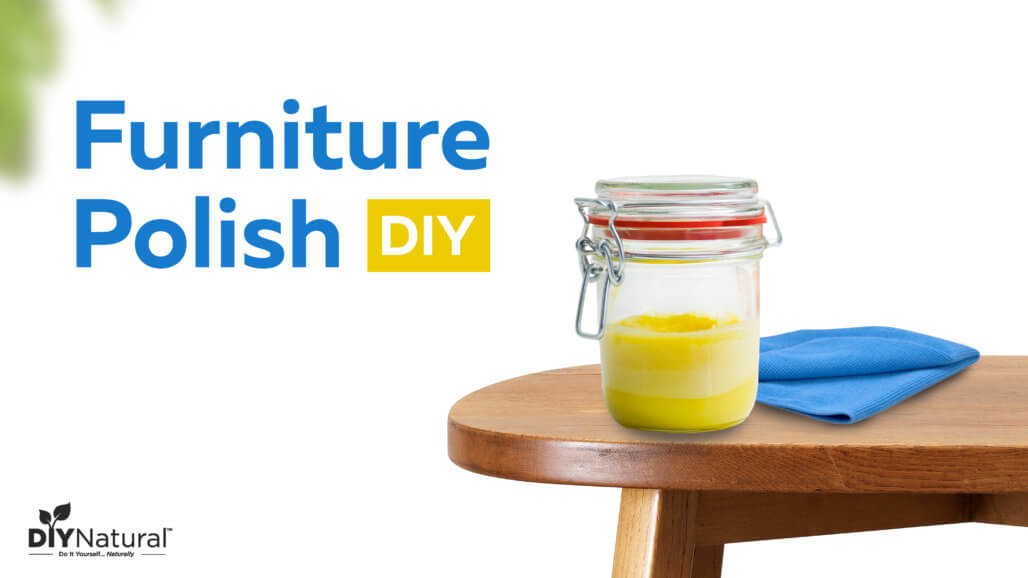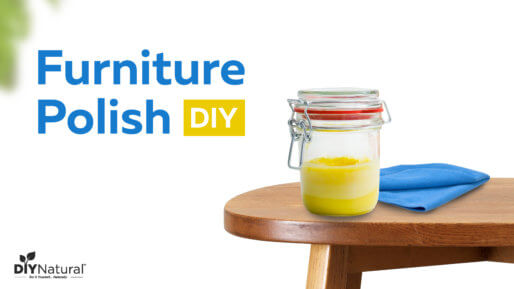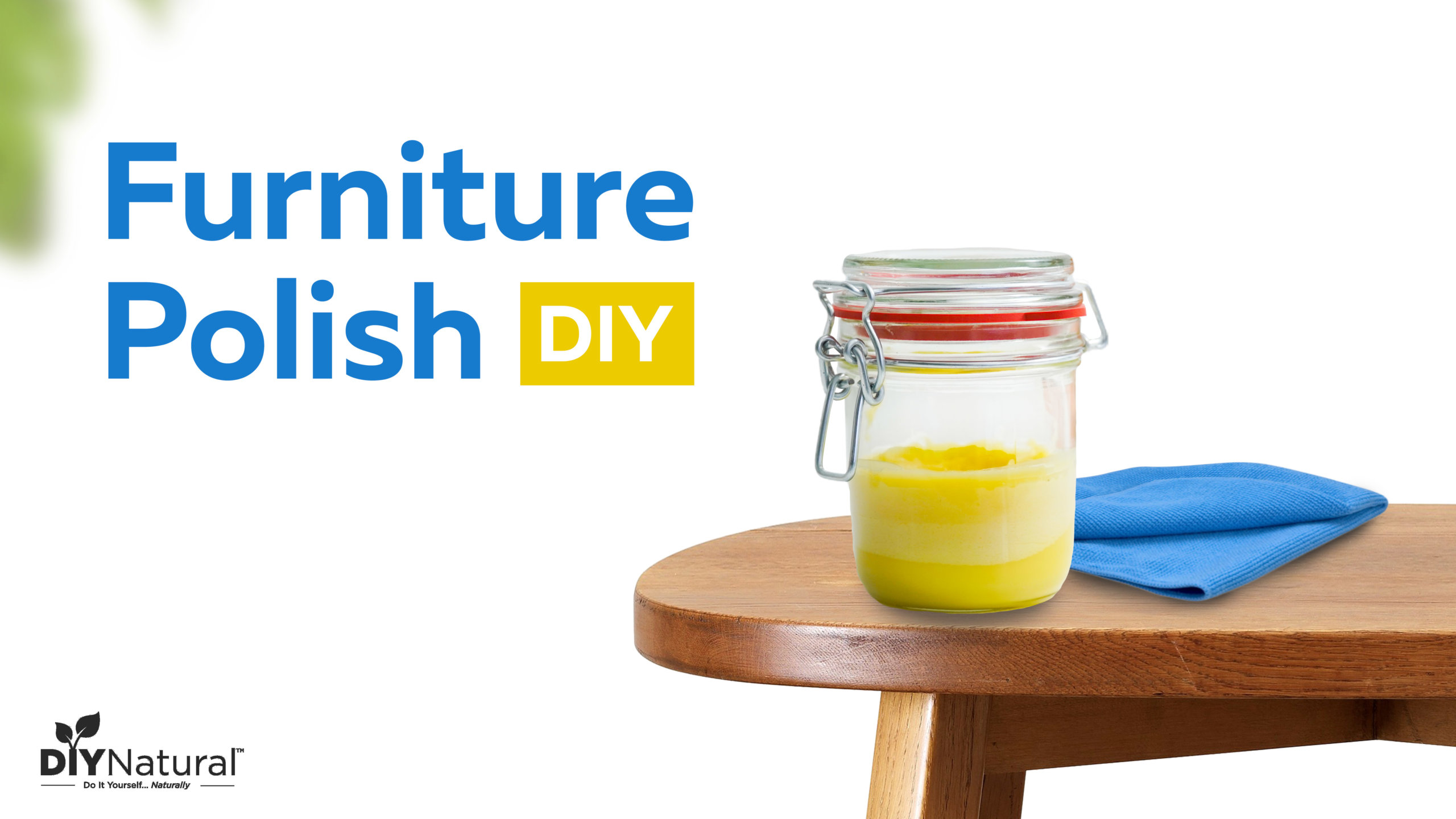
This DIY homemade furniture polish recipe frees you from the chemical-based polish sold in the stores. Enjoy it and share it with loved ones!
Winter is as good a time as spring to clean and make your house feel fresh and new. I take a few extra steps when I clean because I like to keep it as natural as possible. Here are some of my natural cleaning tips.
Natural Cleaning Tips
Start at the top
I start by dusting (see homemade furniture polish recipe below) and cleaning the ceiling and corners first. I use a static duster with no sprays. Twirl it a few times to charge the static and swish it on the ceiling and in the corners. When it looks like there is a lot of dust on it, take it outside and twirl it again. This will dislodge the dust and allow you to start over.
Use microfiber
When I was at my dad and stepmom’s a few years ago, they showed me a fairly new product on the market for cleaning. It was a microfiber cloth. All it took was warm water and elbow grease to clean the windows to a sparkling shine. No harsh chemicals. While you can wash them in the washing machine, don’t use fabric softener. The waxes found in fabric softeners will smear up windows and mirrors. Use felted wool dryer balls and white vinegar in the rinse cycle of the washing machine to soften. Find microfiber cloths here. The microfiber cloths also work great with our homemade furniture polish recipe below.
Vacuum often
I used to just vacuum at the end of my cleaning, but now I do it more than once. That way I don’t miss anything.
Use vacuum sachets
There are products on the market that make the room smell nice while you vacuum, but who knows what’s really in them? I make my own sachets easily and cheaply. Take pieces of cotton fabric that can be cut into small pieces. This helps use up some of the scraps in your fabric stash! They need to be cut small enough to be sucked up by the vacuum – about an inch or two across. Then drip a few drops of an antibacterial essential oil, such as lavender or eucalyptus on them, and place them in a jar. I keep a few baby food jars around just for this. Then when you vacuum, toss a few on the floor and whisk them away. They’ll scent your room, kill germs in the chamber or bag, and biodegrade over time.
Use Diatomaceous Earth
If you use diatomaceous earth in your carpet, now’s the time to do it. If you’ve never used it, it’s easy. Take some food-grade DE powder and sprinkle it evenly over the carpet. Walk on it, working it into the carpet, for a few days. It may be a little unsightly for a few days, but the results are worth it. After a few days have passed, vacuum up the excess. The DE that’s left in the carpet will kill bugs and fleas over the next 6 months or so. After about six months, the crystals break down and need to be reapplied.
Note: It’s important to use only food-grade diatomaceous earth in your home (find it here) – do not use DE that’s made for swimming pools.
Vacuum your electronics
Instead of spraying cleaner directly on electronics, and potentially damaging them, use the small brush attachment on your vacuum hose. It’ll pull dust and dirt out of DVD players, computers, and more.
Steam clean
For dusting and cleaning wood I use our homemade furniture polish recipe below, but my favorite floor cleaner is steam. It will clean, loosen stuck-on dirt, and disinfect your floors. To make an inexpensive steam vacuum, take a cotton washcloth that’s a bit worn and wet it well. Place it in a vegetable or rice steamer and wait a few minutes. I use a metal rack placed well above the water. When it’s hot, use a pair of tongs to remove and slap it on the floor. Use caution as it will be very hot! Then take the end of your mop or Swiffer-type cleaning device and swish it around on the floor. I was really clumsy with it at first, but now that I’ve gotten the hang of it, I won’t use anything else.
Natural furniture cleaners
White vinegar will clean furniture without destroying the finish. Rub store-bought toothpaste gently over water rings on wood to remove them. Use black tea to clean and fill in tiny scratches. Use a brown crayon for larger scratches.
Natural furniture polish
My favorite DIY homemade furniture polish goes back to the old days. It’s a salve-type mixture of beeswax, almond oil, and lemon essential oil. You can make your own using the recipe below.

Homemade Furniture Polish Recipe
This DIY homemade furniture polish recipe frees you from the chemical-based polish sold in the stores. Enjoy it and share it with loved ones!
- Prep Time
- 5 minutes
- Active Time
- 15 minutes
- Cooling Time
- 1 hour
- Total Time
- 1 hour 20 minutes
- Servings
- 5 ounces
- Estimated Cost
- $2
Equipment
Ingredients
- ½ cup sweet almond oil
- ⅛ cup beeswax pastilles (or grated beeswax)
- 10-15 drops lemon essential oil
Instructions
-
Begin making your DIY homemade furniture polish in a double boiler by heating the almond oil and beeswax until the beeswax is completely melted. Wax varies in hardness, so test it before adding the lemon oil. To do this, take a teaspoon and dip it in the oil/wax mixture. Place the spoon on a clean piece of paper and allow it to cool until firm. Once cooled, test the consistency. If it is too soft, add a bit more wax to the mixture and melt completely. If it is too hard, add a bit more oil. It should be firm enough to dip a cloth into and rub across the top, but soft enough to give and melt a bit on contact.
-
Once desired consistency is achieved, add lemon essential oil and stir well. (You could also use other oils such as lavender, or my favorites, rose and rosewood.)
-
Pour it into a wide-mouth glass jar and allow it to harden and cool before using.
To Use
-
Rub a clean cloth across the polish and rub it into the top of your table or other wood furniture that needs polishing. Work it in and buff it with a clean dry cloth. The oils will keep the wood hydrated and the beeswax will prevent more scratches and protect the wood. Lemon essential oil dissolves fingerprints and other dirt.
Recipe Video
Made this recipe?
Mention @diynatural or tag it #diynatural!
What did you think of our DIY homemade furniture polish? Let us know!
*******
image credit to McKay Savage




do you have a recipe for safe use on cultured marble?
Hi Bonnie. We do not currently, but I can suggest the topic to our experts. Blessings!
Any ideas for a good laminate wood floor cleaner? I have been using a mixture of rubbing alcohol, water and vinegar but I just read on this site that the alcohol is toxic and shouldn’t be used. I tried just vinegar and water, and vinegar, water and a drop of dish soap, but those just left streaky, dull floors. The alcohol was what made it work better, but I don’t want to use it anymore if it is bad for us. My cats are always nosing around when I wash my floors also and now I realize they are breathing that in.
I use white vinegar and warm/hot water… clean washcloth and mop as normal. Works well for me. I was getting streaks when using anything with a soap or detergent. So I would omit the dish soap and try that 🙂
Can this be used in hardwood floors that have been scratched and damaged by the dogs nails?
Thanks for all the great tips! Just wondering if the white vinegar is safe to use on leather furniture?
Just wondering how you use black tea for furniture scratches?
I soak a soft cloth into cold tea and buff it into the scratches. You may need to do it more than once if the scratches are a lot lighter in color.
Can I use this polish to oil my butcher block island in my kitchen?
I don’t see why not Lauralee. Blessings!
You should never vacuum a computer. The vacuum cleaner makes a static charge that can crash the hard drive. That’s what happened to mine. 🙁
If your vacuum can reverse (blow instead of suck) you can use it that way. That way it “fluffs” the dust out.
You should never vacuum a computer. The vacuum makes a static charge that can crash your hard drive. That’s what happened to mine. 🙁
What should I use on leather furniture?
Thanks!
You can make your own “saddle soap” Simmer 3 1/2 cups of water. Add 3/4 cup soap flakes, stir until melted. In another pot, melt 1/2 cup of beeswax with 1/4 cup neatsfoot oil. Slowly pour the oil/wax into the soap mixture and stir until it thickens. Pour into a widemouth jar. To use, take a soft cloth and dip into the mixture. wipe onto the leather in a circular motion. Buff off with a soft cloth.
I love my Ultimate Cloth, I personally think it is better than any Micro-fiber cloth on the market, it’s a Mira-fiber cloth. No cleaners just wet and wipe off any surface. The best is wiping granite and my glass stove, clean, no streaks, the first time. Check it out – http://www.ultimateclothcanada.com. 10 out of 10!
Thanks Claudia, I’ll check it out!
Be VERY cautious when using diatomaceous earth as it is VERY Dangerous and will severely damage the lungs when inhaled. Never inhale it…ever!!
Thank you so much, I love your web site
That’s true, Carolyn. You don’t want to get it in your eyes, either. I’ve used a mask when I do the carpets, though now I’m just super careful about it.
How about posting more tips for those of us who do not have carpet, only hardwood floors (heard about all of the chemicals that carpet emits??).
I use the microfiber cloths with steam on my hardwood floor. It hasn’t taken the finish off like I thought it would.
I can do most of the above; thank you once again for a helpful and motivational enewsletter. My stumbling block is with buying essential oils and special ingredients,such as beeswax, due to their expense. I’ll experiment with coconut oil or olive oil, which I have on hand, for the polishing.
Hi Mary, you have to look at it as an investment. If you’re not used to using essential oils then you will not believe how long they last. Trust us, you’ll save money if you look at it as an investment and commit to using them to make your own natural products (for use and gifts). Blessings!